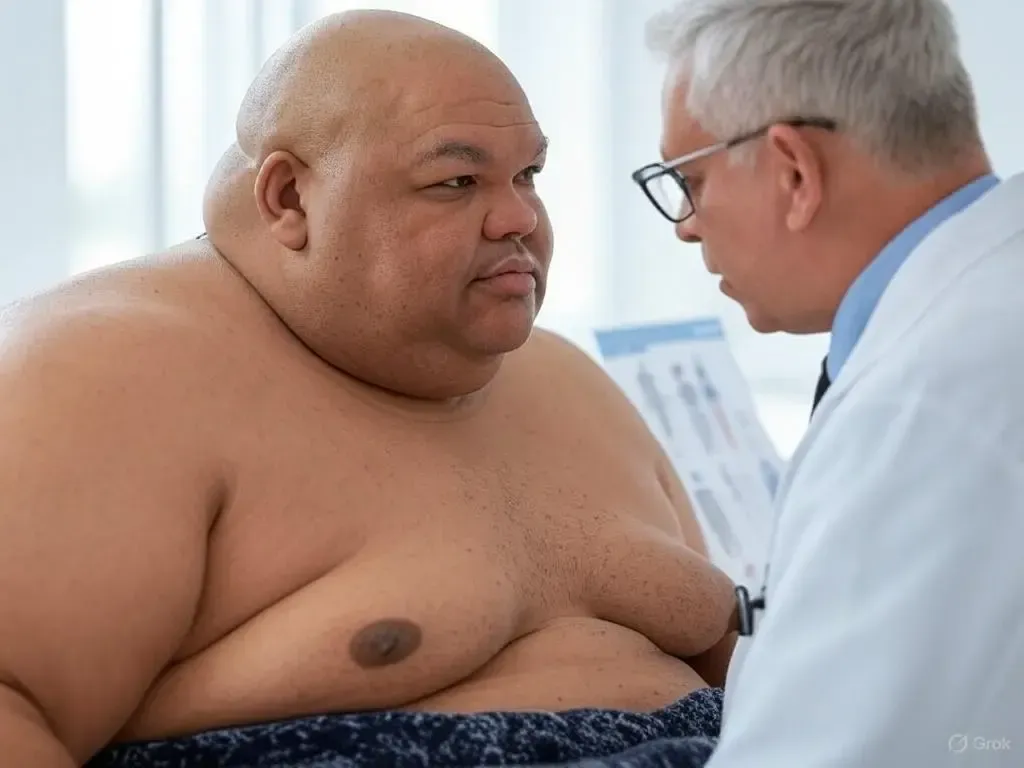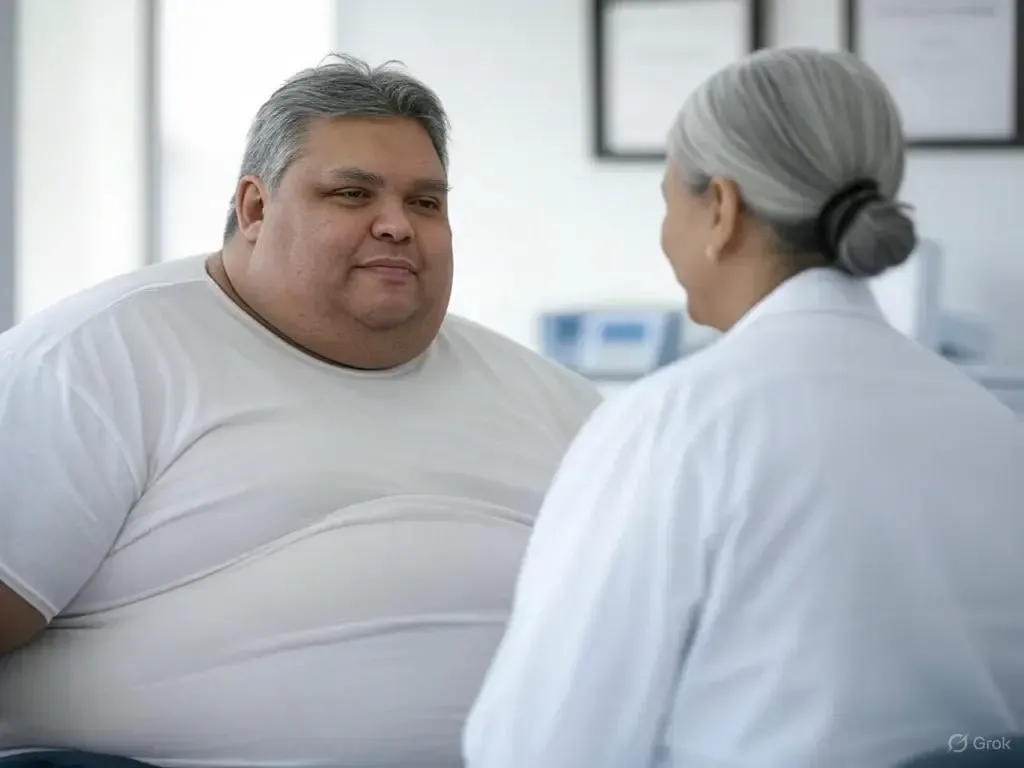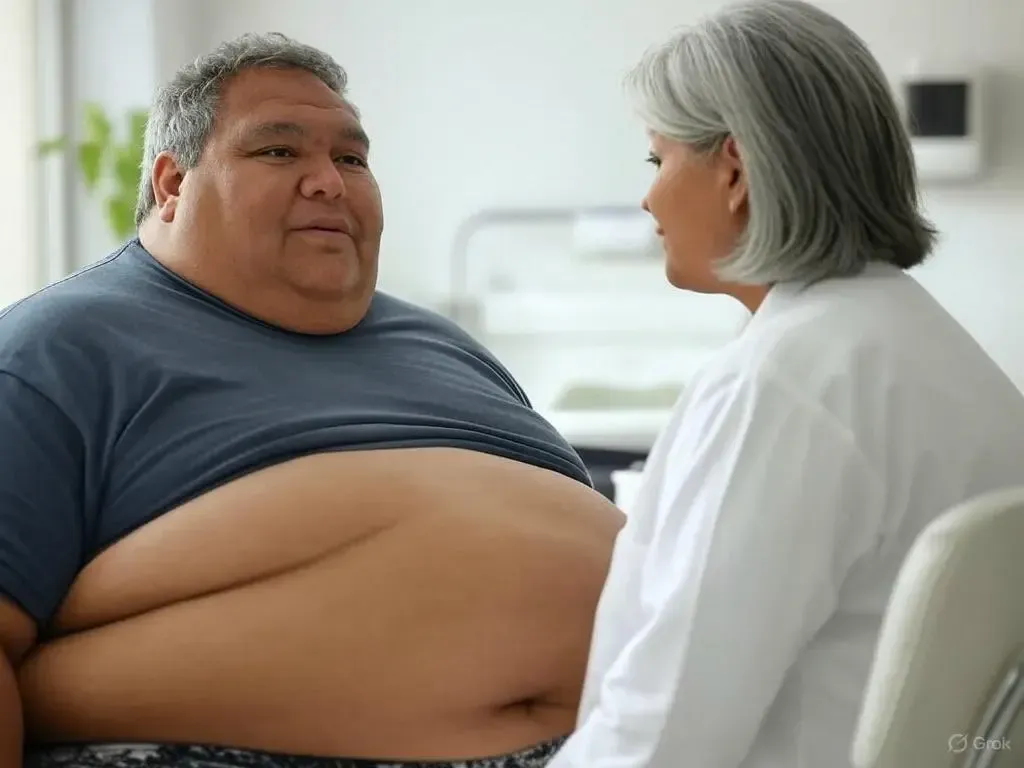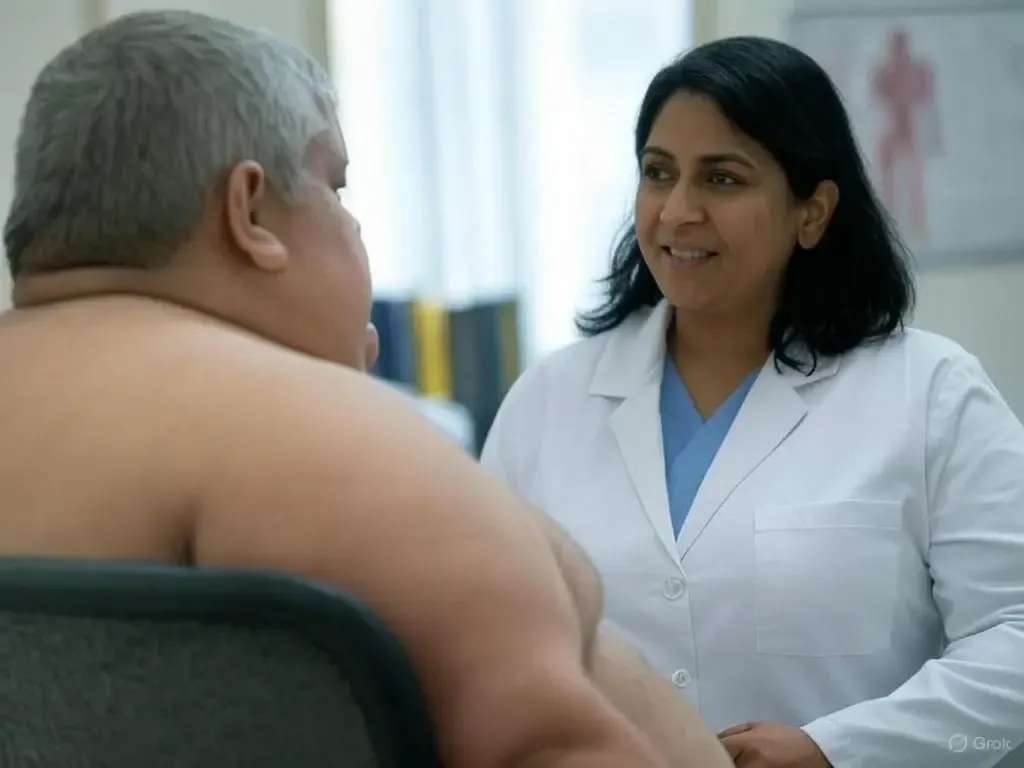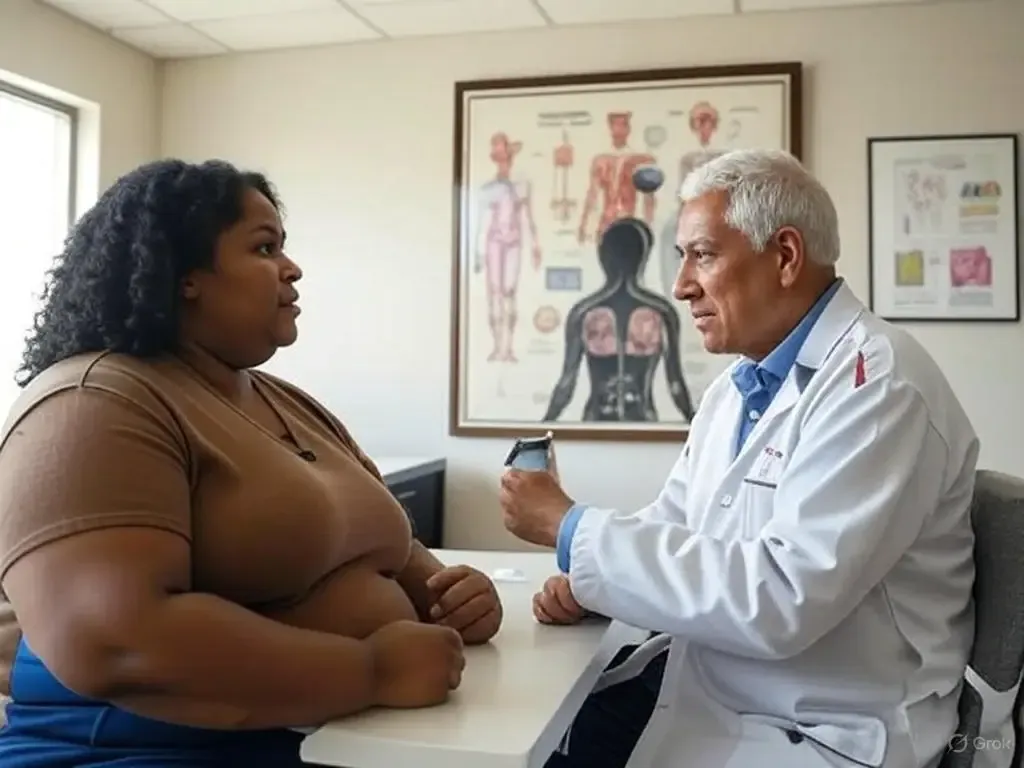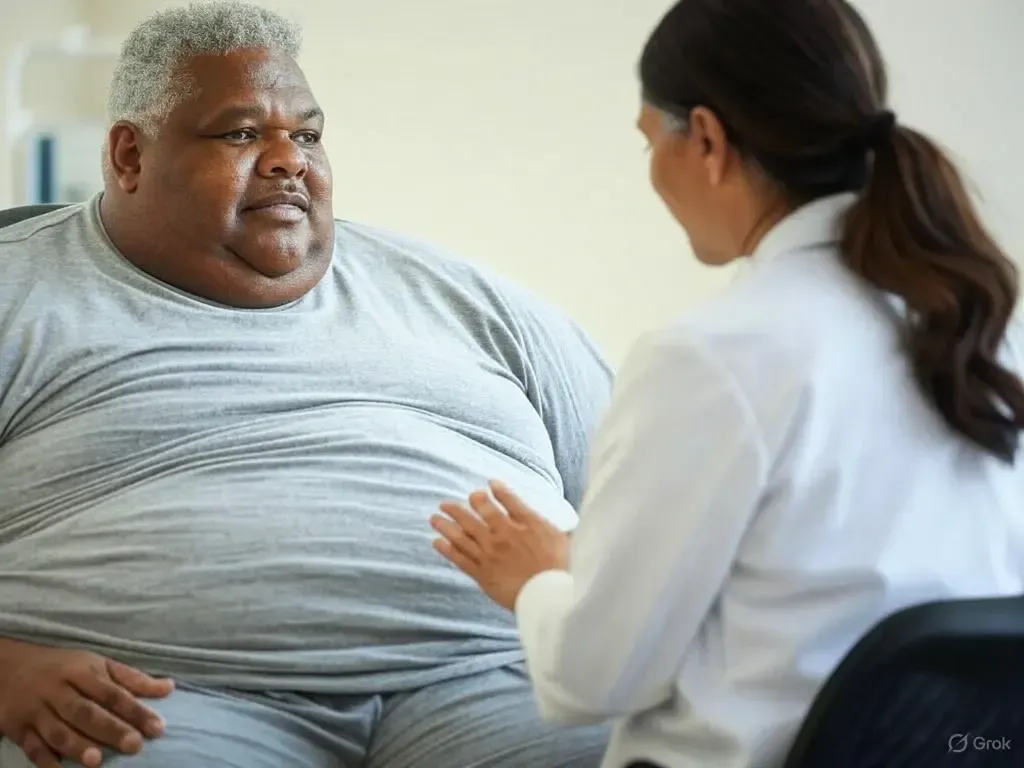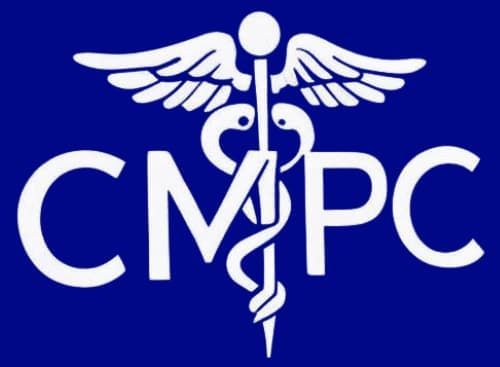
Discover discomfort to expect with weight loss procedures and learn how the Allurion Gastric Balloon offers a more comfortable alternative for effective weight management.
If you're considering weight loss treatment in Gatineau, concerns about potential discomfort during and after the procedure are entirely natural.
Many of our patients ask this question before committing to treatment, and it's an important factor in making your decision. After all, understanding what sensations to expect helps you prepare mentally and ensures you can incorporate the treatment successfully into your life.
At CMPC, we believe in complete transparency about the patient experience. Our team has guided several patients through various weight management options, and we've found that patients who know what to expect report greater satisfaction with their treatment journey.
Let's explore what discomfort you might experience with different weight loss approaches, focusing on our recommended Allurion Gastric Balloon system.

Know About The Discomfort in Different Weight Loss Approaches
Various treatment options involve different levels and types of discomfort, from minimal to significant, temporary to extended. Understanding these differences can help you choose an approach that aligns with your comfort preferences.
Surgical Weight Loss Procedures and Associated Discomfort
Traditional bariatric surgeries involve more significant discomfort considerations:
- Post-surgical pain expectations: Procedures like gastric bypass or sleeve gastrectomy involve abdominal incisions that create pain during the healing process. Most patients report moderate to significant discomfort in the first 3-7 days, gradually improving over 2-3 weeks. This typically requires prescription pain medication initially, transitioning to over-the-counter options as healing progresses.
- Gas pain and bloating sensations: The carbon dioxide used to inflate the abdomen during laparoscopic surgery can cause shoulder pain and abdominal distension for several days after surgery. This unique discomfort often surprises patients who aren't prepared for it. Simple movement strategies like regular walking and position changes help dissipate this gas more quickly.
- Incision site healing discomfort: Multiple small incisions or one larger incision create localized pain, tenderness, and sometimes itching during the healing process. Most patients find that incision discomfort decreases significantly within 7-10 days but may remain noticeable for several weeks when stretching or during specific movements.
- Internal healing sensations: Beyond visible incisions, internal tissue healing creates deeper sensations that patients describe as pulling, tightness, or occasional sharp twinges, particularly with specific movements. These sensations typically diminish over 4-8 weeks as internal healing completes but may occasionally be noticed for several months during vigorous activity.
- Throat soreness from intubation: General anesthesia requires breathing tube placement, resulting in temporary throat discomfort, hoarseness, or cough for 24-72 hours after surgery. Soothing lozenges, cool beverages, and voice rest help manage these symptoms.
- Nausea and digestive adjustment: The combination of anesthesia, medication side effects, and altered digestive anatomy can cause significant nausea in early recovery. Most surgical patients from Gatineau require anti-nausea medication for at least several days, with some needing it for 1-2 weeks.
Most surgical patients report discomfort peaks around days 2-3 post-operation and then gradually improves. While discomfort is significant, it's typically manageable with appropriate medication and generally follows a predictable improvement pattern that helps patients tolerate the recovery process.
Traditional Gastric Balloon Procedures and Comfort Considerations
Conventional gastric balloons (excluding Allurion) are less discomforting than surgery, yet they still pose challenges:
- Endoscopic placement discomfort: Traditional balloons require endoscopy for placement and removal, involving throat discomfort during the procedure despite sedation. Patients typically report a sore throat and mild to moderate discomfort for 24-48 hours afterward. While not painful during the procedure due to sedation, the aftermath includes this temporary throat irritation.
- Initial adaptation period symptoms: After placement, traditional balloons cause significant nausea, cramping, and sometimes vomiting for 3-7 days as the stomach adjusts to the foreign object. This adjustment period represents the most challenging discomfort phase, with most patients requiring anti-nausea medication and sometimes acid reducers to manage symptoms. Many patients report that this phase tests their commitment to the process.
- Ongoing pressure sensations: Throughout the treatment period (usually 6 months), patients experience varying degrees of fullness, pressure, and occasional acid reflux. While not typically painful, these sensations require ongoing adjustment to eating patterns and sometimes medication for acid control. Most patients describe becoming accustomed to these sensations within 2-3 weeks.
- Removal procedure discomfort: Traditional balloons require another endoscopy for removal, involving similar throat discomfort and recovery from sedation. This second procedure represents another period of discomfort that patients must prepare for.
While less invasive than surgery, traditional balloon procedures still involve significant discomfort considerations that affect daily activities during adjustment periods.
The Allurion Advantage: A More Comfortable Treatment Experience
At CMPC, we specialize in the Allurion Gastric Balloon System, an innovative weight-loss solution designed to minimize discomfort while delivering effective results.
The Comfortable Placement Process
The Allurion system dramatically improves the placement experience:
- No endoscopy required: Unlike traditional balloons, the Allurion balloon arrives in a swallowable capsule attached to a thin tube, eliminating the need for endoscopic placement and associated throat discomfort. Most patients express relief when learning no endoscopy is needed.
- Simple swallowing process: You swallow the capsule with water while a healthcare professional provides guidance. Most patients accomplish this within minutes, comparing it to a slightly larger pill. Those with pill-swallowing anxiety receive additional support and techniques to make the process comfortable.
- No sedation or anesthesia needed: This eliminates all discomfort associated with sedation effects, including grogginess, nausea, or coordination issues after the procedure. You remain fully alert and comfortable throughout the entire process.
- Quick X-ray confirmation: A simple X-ray verifies proper placement, involving no discomfort whatsoever. This takes moments and provides immediate verification that the balloon is correctly positioned.
- Same-day return to activities: Most patients return to normal activities immediately after placement, with no recovery period from anesthesia or invasive procedures. Many of our patients schedule placement during a lunch break and return to work or regular activities afterward.
This streamlined placement process represents a significant comfort advantage over surgical options and traditional balloon systems, making it accessible even to those with low discomfort tolerance.
The Adjustment Phase: What to Expect
While the Allurion system minimizes discomfort, some adjustment sensations are normal:
- First 24-72 hours: Most patients experience some degree of nausea, stomach cramps, or feelings of pressure as their body recognizes the balloon's presence. These sensations typically begin a few hours after placement when the balloon fully inflates. The intensity varies significantly between individuals, with some patients reporting only mild awareness while others experience more pronounced symptoms.
- Days 3-7: Symptoms typically worsen as your body adapts to the balloon. Most patients notice a significant improvement by day 3, with continued progress each day. By the end of the first week, many report only occasional awareness of the balloon's presence, primarily when eating too quickly or too much.
- Beyond week one: Most patients report feeling comfortable with the balloon by this point, with only occasional mild symptoms when overeating or eating too rapidly. Your stomach has adapted to the balloon's presence, and while you benefit from its appetite-suppressing effects, you're generally not distracted by discomfort.
To help manage this adjustment phase, we provide local patients with specific medications and strategies:
- Preventive anti-nausea medication: Taken as directed before symptoms become severe helps prevent the worst discomfort
- Acid-reducing medication: Minimizes potential acid reflux during the adjustment phase
- Specific hydration guidelines: Proper fluid intake reduces nausea significantly
- Dietary progression plan: Gradually transitioning from liquids to solids eases stomach adaptation
- Position and timing recommendations: Certain positions and meal timing strategies minimize discomfort
Most patients find that following these protocols makes the adjustment phase manageable, with discomfort rarely interfering with necessary daily activities.
Natural Removal: No Discomfort at the End of Treatment
Unlike traditional balloons, the Allurion system features a comfortable, natural removal process:
- Automatic deflation: After approximately 16 weeks, the balloon naturally deflates through a time-activated release valve. This process happens gradually and painlessly, with no sensation most patients notice.
- Natural passage: The deflated balloon passes naturally through your digestive system and out of your body, typically without you even noticing. There's no discomfort associated with this process.
- No removal procedure needed: You avoid the endoscopic removal required with traditional balloons, eliminating that source of discomfort. Patients frequently cite this as a significant advantage when choosing between balloon options.
- No recovery period: There's no associated recovery or adjustment afterward with no removal procedure. Your treatment concludes without additional discomfort considerations.
This comfortable conclusion to the treatment process represents another significant advantage of the Allurion system, particularly for those concerned about procedure-related discomfort.
Patient Experiences: Real Comfort Stories from Allurion Residents
While individual experiences vary, these anonymized examples from local patients help illustrate typical discomfort experiences:
Marie's Experience: Minimal Adjustment Symptoms
A 42-year-old teacher experienced:
- Placement day: Mild nausea beginning about 4 hours after placement, managed effectively with prescribed medication
- Days 2-3: Continued mild nausea, primarily in the mornings, resolving by midday
- Day 4 onward: Complete resolution of symptoms with occasional feelings of pressure only after larger meals
- Her perspective: "I was surprised how quickly my body adjusted. The first two days required some medication management, but after that, I rarely noticed the balloon except as a helpful reminder to eat smaller portions."
Robert's Experience: Moderate Initial Discomfort
A 56-year-old office worker experienced:
- Placement day: Moderate nausea and cramping beginning 2 hours after placement, requiring regular anti-nausea medication
- Days 2-4: Continuing moderate discomfort, particularly after any solid food attempts
- Days 5-7: Gradual improvement with intermittent mild symptoms
- Day 8 onward: Occasional awareness but no significant discomfort
- His perspective: "The first week was challenging and tested my commitment, but knowing it would improve helped me push through. By the second week, I was comfortable, and the weight loss results made the temporary discomfort worthwhile."
Isabelle's Experience: More Pronounced Adjustment Period
A 38-year-old healthcare worker experienced:
- Placement day: Significant nausea and vomiting beginning 3 hours after placement
- Days 2-5: Continued strong symptoms requiring medication adjustments and primarily liquid nutrition
- Days 6-10: Gradual improvement with intermittent moderate symptoms
- Days 11-14: Transition to mild, manageable awareness
- Her perspective: "I had a tougher adjustment than most, but the CMPC team was incredibly supportive, adjusting my medication and providing constant encouragement. Despite the challenging start, I'd still choose this option again, considering the results and the discomfort's temporary condition."
These varied experiences reflect the range of patients' responses, most falling into the minimal to moderate category. Our extensive experience with patients shows that even those with more pronounced initial symptoms typically adjust within 7-14 days.
Factors That Influence Discomfort Tolerance
Several personal factors may affect your individual discomfort experience:
Physical Considerations
Physical attributes and history influence comfort experience:
- Prior gastrointestinal sensitivity: Those with existing conditions like irritable bowel syndrome or frequent digestive upset may experience more pronounced adjustment symptoms. We review your digestive history thoroughly before recommending treatment options.
- Pain threshold variations: Individual pain tolerance varies significantly and often predicts adjustment comfort. More proactive comfort management may be beneficial if you typically find medical procedures or stomach discomfort particularly challenging.
- Previous pregnancy experience: Interestingly, many female patients who have experienced pregnancy report that the pressure sensations feel somewhat familiar and therefore more tolerable. The body awareness developed during pregnancy sometimes translates to a more straightforward adaptation.
- Medication sensitivity patterns: How you typically respond to medications like anti-nausea treatments influences comfort management effectiveness. Your history of motion sickness or medication side effects helps us customize your comfort plan.
- Stomach size and capacity factors: Physical stomach characteristics sometimes influence adaptation comfort, though this isn't easily predictable before placement. Regardless of stomach size, most patients successfully adapt to the balloon's presence.
Understanding these physical factors helps our team develop personalized strategies to maximize your comfort throughout treatment.
Psychological Factors
Mental and emotional aspects significantly influence discomfort tolerance:
- Anxiety levels and management: Higher anxiety about physical sensations often intensifies discomfort perception. We provide relaxation techniques and sometimes anxiety management medication for patients who identify this concern.
- Motivation strength influence: Stronger motivation for weight loss success helps many patients tolerate temporary discomfort more effectively. Clearly identifying and regularly revisiting your motivation enhances resilience during adjustment phases.
- Previous coping strategy effectiveness: Your established methods for managing discomfort often predict adjustment success. We help you apply previously successful coping techniques to this new experience.
- Catastrophizing tendency awareness: The tendency to imagine worst-case scenarios can amplify discomfort perception. Cognitive techniques help manage these thought patterns during the adjustment period.
- Social support adequacy: Strong support from family and friends correlates with better discomfort tolerance. We encourage identifying specific support people before beginning treatment.
- Distraction capability utilization: Effectively using distraction techniques often enhances comfort during adjustment. We provide specific distraction strategy recommendations based on your preferences and lifestyle.
Our comprehensive pre-treatment consultation helps identify these psychological factors and develop personalized strategies to support your comfort.
Maximizing Comfort During Your Treatment Journey
Pre-Procedure Preparation Strategies
Proper preparation significantly enhances comfort during treatment:
- Medication optimization planning: We ensure all comfort medications are filled and reviewed before placement, with a clear understanding of timing and dosage. Having these medications readily available before symptoms begin provides significant advantages.
- Scheduling consideration recommendations: Placing the balloon just before a weekend or light workday gives you flexible adjustment time. Several patients find that having 2 to 3 days without significant obligations helps them manage the initial adjustment more comfortably.
- Environment preparation guidance: Setting up your home with easily accessible comfort items (medications, appropriate foods/beverages, comfortable resting spaces) enhances the adjustment experience. Simple preparations like keeping crackers and clear liquids at the bedside can make a significant difference.
- Support person briefing is essential: Ensuring someone understands what you're experiencing and how to help prevent isolation during adjustment. Many patients find that having their support person attend the pre-procedure consultation improves their understanding and ability to help.
- Realistic expectation-setting benefits: Understanding the typical timeline of symptoms helps maintain perspective during challenging moments. Knowing that discomfort is temporary and follows a predictable improvement pattern helps many patients persist through initial adjustment.
- Hydration pre-loading advantages: Being well-hydrated before placement reduces subsequent nausea intensity for many patients. We provide specific hydration recommendations for the 24 hours preceding your procedure.
These preparation strategies significantly enhance comfort during the critical first days with the balloon and represent an essential part of our comprehensive care approach.
Effective Management During the Adjustment Phase
Once the balloon is placed, these approaches maximize comfort:
- Medication timing optimization: Taking anti-nausea medication before severe symptoms prevents escalation cycles. We recommend specific timing rather than waiting until discomfort becomes pronounced.
- Position experimentation benefits: Finding which positions minimize pressure sensations helps manage comfort, particularly during sleep. Many patients discover that left-side sleeping or semi-reclined positions reduce discomfort noticeably.
- Hydration technique refinement: Sipping small amounts frequently rather than larger amounts less often improves tolerance. Using room temperature or cool (not cold) liquids enhances comfort for most patients.
- Dietary progression patience: Following the recommended progression from clear liquids to full liquids to soft foods and finally regular textures allows gradual adaptation. Attempting solid foods too quickly often triggers unnecessary discomfort.
- Distraction method utilization: Engaging in absorbing activities directs attention away from physical sensations. Favourite shows, audiobooks, gentle walks, or conversations with friends can significantly reduce perceived discomfort.
- Rest prioritization importance: Ensuring adequate sleep enhances your body's adaptation capacity. Many patients notice fatigue amplifies discomfort perception, making sufficient rest an important comfort strategy.
- Temperature therapy application: Some patients find that a warm (not hot) compress on the upper abdomen provides comfort during cramping episodes. This simple approach often provides surprising relief during adjustment.
Our CMPC team remains available throughout this adjustment phase to provide guidance, adjustment recommendations, and reassurance based on your specific experience.
Long-Term Comfort Optimization
Beyond the initial adjustment, these approaches enhance ongoing comfort:
- Eating pattern refinement: Discovering your optimal meal timing, size, and composition improves day-to-day comfort significantly. Most patients intuitively understand their new limits within 2-3 weeks.
- Hydration schedule separation: Drinking primarily between rather than during meals prevents uncomfortable fullness. This simple habit adjustment makes a considerable difference in daily comfort.
- Problematic food identification: Some foods cause more discomfort with the balloon present, particularly carbonated beverages, very spicy foods, or large quantities of fibrous vegetables consumed at once. Identifying and moderating these specific triggers enhances comfort without unnecessary restriction.
- Stress management incorporation: Stress often amplifies awareness of physical sensations, including the balloon's presence. Regular stress reduction practices help maintain comfort throughout treatment.
- Physical activity balance finding: Appropriate exercise enhances overall well-being without triggering balloon discomfort. Most patients can resume regular physical activity after the first week, initially with minor modifications to high-impact activities.
- Progress recognition practice: Acknowledging adaptation improvements and weight loss success enhances tolerance for minor discomfort. Regularly recognizing your progress strengthens commitment through challenging moments.
These approaches help patients maintain comfort throughout treatment, maximizing both quality of life and treatment effectiveness.
Special Considerations for Different Comfort Preferences
Options for Those with Low Discomfort Tolerance
If you're particularly concerned about procedure discomfort:
- Anxiety medication consideration: Short-term anxiety management medication sometimes helps during the initial adjustment period. For patients with significant anxiety about physical sensations, this temporary support can make a meaningful difference.
- Extended liquid phase option: Remaining on liquid nutrition slightly longer than standard recommendations provides gentler adaptation. While this approach may slightly delay the full weight loss benefit, it often enhances comfort during adjustment.
- More frequent follow-up scheduling: Additional brief check-ins during the first week provide reassurance and an opportunity for comfort strategy adjustment. Many patients with lower discomfort tolerance benefit from this extra support and monitoring.
- Symptom diary utilization: Tracking discomfort patterns helps identify specific triggers and practical management approaches. This systematic approach often provides valuable insights and a sense of control that enhances tolerance.
- Gradual return to activities planning: Scheduling a more conservative activity resumption timeline prevents overexertion during adaptation. While most patients can resume normal activities quickly, those with lower discomfort tolerance sometimes benefit from a more gradual approach.
Our team works closely with patients expressing heightened discomfort concerns to develop personalized comfort plans that address these needs.
Approaches for Those with Active Lifestyles
For physically active individuals with specific comfort considerations:
- Exercise modification timelines: We guide when and how to reintroduce different activity types safely. Most patients can resume light activity within days and moderate exercise within a week, with specific recommendations for high-intensity training.
- Hydration strategy adaptation: Active individuals require specialized guidance on maintaining adequate hydration despite the balloon's presence. Specific pre-, during, and post-exercise hydration protocols help maintain comfort and performance.
- Meal timing around training: Strategic nutrition timing maximizes energy availability while minimizing discomfort during activity. Most active patients develop specific pre-and post-workout nutrition patterns that support comfort and performance.
- Sport-specific position considerations: Certain sports or movements might temporarily increase balloon awareness. Understanding these specific situations helps athletes make minor technique modifications during treatment.
- Recovery nutrition adaptations: Modified post-exercise nutrition approaches ensure adequate recovery without triggering discomfort. Smaller, more frequent recovery meals are more comfortable than traditional larger recovery nutrition.
Many physically active residents of Ontario successfully incorporate the Allurion balloon into their lifestyle with these specialized approaches, maintaining most of their regular activities throughout treatment.
The CMPC Commitment to Your Comfort
At CMPC, your comfort throughout the weight loss journey remains a top priority:
- Personalized comfort planning: We develop individualized strategies based on your concerns, history, and preferences. This customized approach enhances comfort far more effectively than generic recommendations.
- Responsive availability promise: Our team remains readily accessible during your adjustment period to address concerns promptly. Many patients report that simply knowing support is readily available reduces anxiety about potential discomfort.
- Medication adjustment flexibility: If standard comfort medications prove insufficient, we quickly adjust recommendations to find effective alternatives. This responsive approach prevents unnecessary prolonged discomfort.
- Judgment-free communication environment: We encourage honest reporting of your comfort experience without concern about being perceived as complaining. Understanding your experience allows us to provide better support.
- Experience-based guidance provision: Having supported hundreds of patients through this process, we draw on extensive experience to suggest effective comfort strategies. This collected wisdom benefits each new patient beginning their journey.
Our patients consistently report that this comprehensive support system significantly enhances their comfort throughout treatment.
Your Next Steps: Moving Forward with Confidence
Understanding the discomfort associated with weight loss procedures represents an important step in making an informed treatment decision. For most Gatineau residents considering weight management options, the Allurion Gastric Balloon system offers the optimal balance of effectiveness and comfort compared to more invasive alternatives.
The temporary nature of adjustment discomfort, typically lasting just days to a week for most patients, is offset by the significant weight loss benefits that extend months and years beyond treatment. With proper preparation and support, most patients find the process entirely manageable.
You may wish to read "What if I have an adverse reaction to a procedure or medication?" to address another common concern about weight loss treatments.
Ready to discuss how the Allurion system might fit your comfort preferences and weight loss goals?
Contact CMPC today to schedule your consultation. Our experienced team will help you understand what to expect, address your comfort concerns, and develop a personalized plan for successful weight management.
Don't let fears about temporary discomfort prevent you from addressing more significant long-term health concerns.
Call us NOW to begin your journey toward improved health and well-being with minimal disruption to your Gatineau lifestyle.
